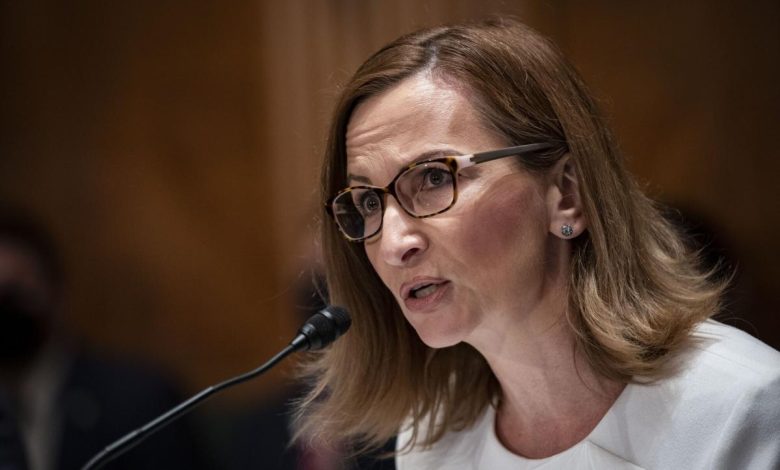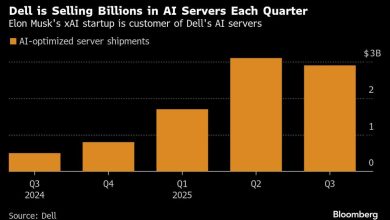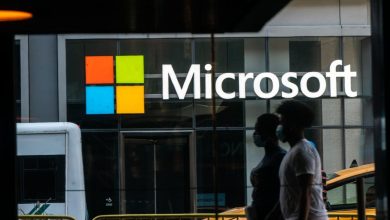(Bloomberg) — Upstart financial firms that provide services like early paycheck access or buy-now, pay-later plans have attracted rising interest from customers and investors alike. Fintechs raised nearly $24 billion globally in the first three quarters of 2024, according to data from CB Insights, and represent a growing competitive threat to traditional banks and asset managers.
“We just have to be better, not just than our peer banks but everybody else that’s competing for our customers,” Banco Santander Executive Chair Ana Botín said at the Bloomberg Women Money & Power conference in London in December. “Accounts tend to be still with us, but payments and value added services are going to others,” Botin told Francine Lacqua.
The incoming US administration has made financial deregulation a policy priority for the next four years, and the future of the powerful Consumer Financial Protection Bureau is in question. In Europe, by contrast, policymakers continue to take a cautious approach to the industry. That asymmetry has made the US an attractive market for fintech startups looking for both growth and sources of funding.
When banking-as-a-service provider Synapse Financial Technologies filed for bankruptcy, it served as a reminder of the novel risks posed by “non-traditional” banking arrangements. “Synapse highlighted how the advancements in technology in combination with financial services opened us up to certain risks that we hadn’t thought about before,” said R.A. Farrokhnia, who teaches at Columbia Business School.
Synapse served as a middleman between banks covered by the Federal Deposit Insurance Corp. and third-party fintechs wanting to leverage bank infrastructure to offer financial products. Its collapse has left thousands of fintech customers without access to money in accounts that were, in some cases, advertised as FDIC-insured. There is an estimated $65 million to $95 million shortfall between cash available for disbursement and the balance owed to customers recorded in Synapse ledgers, bankruptcy trustee Jelena McWilliams said in a June filing.
“This has been incredibly demoralizing on our end,” McWilliams said during a status update call with the court in December. “We have thrown all the resources at our disposal to come to the bottom line. Initially, the banks were not corresponding in communicating with each other. We made that process capable and available to them. And were frankly hoping that along the way that would yield the shrinking of the shortfall that was initially identified. That shortfall has not shrunk despite those efforts.”
In a joint statement responding to the bankruptcy, the Board of Governors of the Federal Reserve System, the FDIC and the Office of the Comptroller of the Currency said they support “responsible innovation” while “reminding banks of potential risks” associated with such fintech partnerships. And the FDIC has taken up internal initiatives to track fintechs and their bank partners more closely.
Chime
Chime Financial Inc., which recently filed for a confidential public listing, in May agreed to pay more than $4.5 million after the CFPB accused the digital bank of failing to refund consumers in a timely manner when their accounts were closed.
The San Francisco-based company’s policy originally stated it would send a check with the remaining positive balance no more than 14 days after a customer’s account was closed, regardless of the reason. The consent order said that thousands of customers faced delays in receiving their cash, in some cases waiting over 90 days, and driving some to seek higher cost credit options to bridge the gap.
“When Chime discovered the issue, we worked with our vendor to resolve the error and issue refunds to impacted consumers,” Chime said in a statement. “We share the Bureau’s goal to create a more competitive and accessible financial landscape that is good for everyday consumers.”
Chime offers checking and savings accounts and credit cards to roughly 7 million customers across the US, according to the CFPB.
Dave
The neobank Dave Inc.’s hallmark product is a cash-advance feature offering up to $500, marketed as available in five minutes or less. In November, the Federal Trade Commission filed a complaint against the startup that alleged it had misled customers about the amount available to them through the product.
The complaint alleged that Dave most commonly offered consumers advances of only $25, a fraction of what was advertised. Additionally, the FTC noted that on many advances Dave collects a “tip,” typically amounting to 15% of the amount provided to the consumer. Dave also advertised that it would donate a specified number of meals to feed hungry children based on the fee the consumer pays. In reality, according to the FTC complaint, the company typically made a donation amounting to $1.50 or less.
“We are disappointed the FTC has chosen to file suit against Dave,” a spokesperson wrote in a statement provided to Bloomberg News at the time. “We believe this case is another example of regulatory overreach by the FTC, and we intend to vigorously defend ourselves.”
Revolut
Revolut Technologies Inc. is the UK’s largest fintech, with a recent valuation of $45 billion. Offering its services to 50 million customers globally, Revolut gained a long-awaited UK bank license this year and has hinted at plans to pursue a similar license in the US.
Revolut’s growth hasn’t come without challenges. Its years-long quest to attain a UK bank license encountered pressure from The European Central Bank for the startup to improve financial crime controls and governance procedures. And the firm tops UK rivals in scam complaints.
Read: Revolut Faces UK Fraud Lawsuit After Scammer Stole €700,000
“Revolut takes fraud and the industry-wide risk of customers being coerced by organized criminals, incredibly seriously,” a Revolut spokesperson said in a statement.
The neobank says it invests heavily in fraud prevention. Revolut employs some 4,000 people to analyze customer transactions to detect unusual payments and cut fraudulent UK transactions by more than 20% in 2023. In 2024, through fraud intervention warnings, the firm has stopped nearly twice as many customers from completing potentially fraudulent transactions compared with 2023, according to the company.
SoLo Funds
Peer-to-peer lending platform SoLo Funds Inc. pitched itself as an option for cash-strapped individuals to find an emergency source of funding. The platform connected borrowers with lenders and advertised no mandatory fees or interest: Borrowers could request interest-fee loans of up to $575 to be repaid within 35 days.
By contrast, a class action lawsuit filed against the startup alleged that consumers who thought they were signing up for an interest-free loan but ended up paying a fee masked as a “tip” to the lender and “donations” to the company itself. The startup has also drawn the attention of the CFPB, which alleged in a May complaint that the total cost of some loans serviced by SoLo Funds carried an equivalent annual percentage rate of over 1,000% and that the company hides its “no donation” option.
SoLo Funds didn’t immediately return a request for comment.
TomoCredit
TomoCredit Inc. advertised itself as a way for immigrants and international students to improve their credit scores. The startup’s subscription product stacked up hundreds of customer complaints to the Better Business Bureau, all alleging that canceling the subscription required extensive conversations with the hard-to-reach customer support teams.
Forbes reported in October that the three major credit bureaus — Experian, TransUnion and Equifax — stopped incorporating reports from the startup in their calculations. Eliminating subscription traps is a priority for the FTC, which announced a finalized rule against the practice in October. The rule requires companies to make it as easy to cancel a subscription as it was to sign up for.
TomoCredit declined to comment.
Affirm, Afterpay, Klarna, PayPal, Zip
The CFPB this year issued an interpretive rule confirming that the buy-now, pay-later lenders that grew in popularity over the pandemic should be treated in some ways like credit-card providers.
That designation requires BNPL providers to offer customers the same rights attached to credit cards, including the right to dispute charges and demand refunds after returning a product.
The new guidance was the conclusion of a years-long inquiry from the agency exploring concerns around consumers accumulating debt, regulatory arbitrage and data harvesting. The steps to oversee BNPL firms are in part a response to concerns over consumers racking up “phantom debt” that escapes the notice of credit reporting agencies and runs the risk of individuals overextending themselves.
The rule was swiftly met with a legal challenge from a trade group representing some of the buy-now, pay-later firms arguing that the CFPB did not follow necessary procedural steps.
Read: Klarna’s Planned IPO Sets the Stage for More Fintech Listings
Most Read from Bloomberg Businessweek
©2024 Bloomberg L.P.







